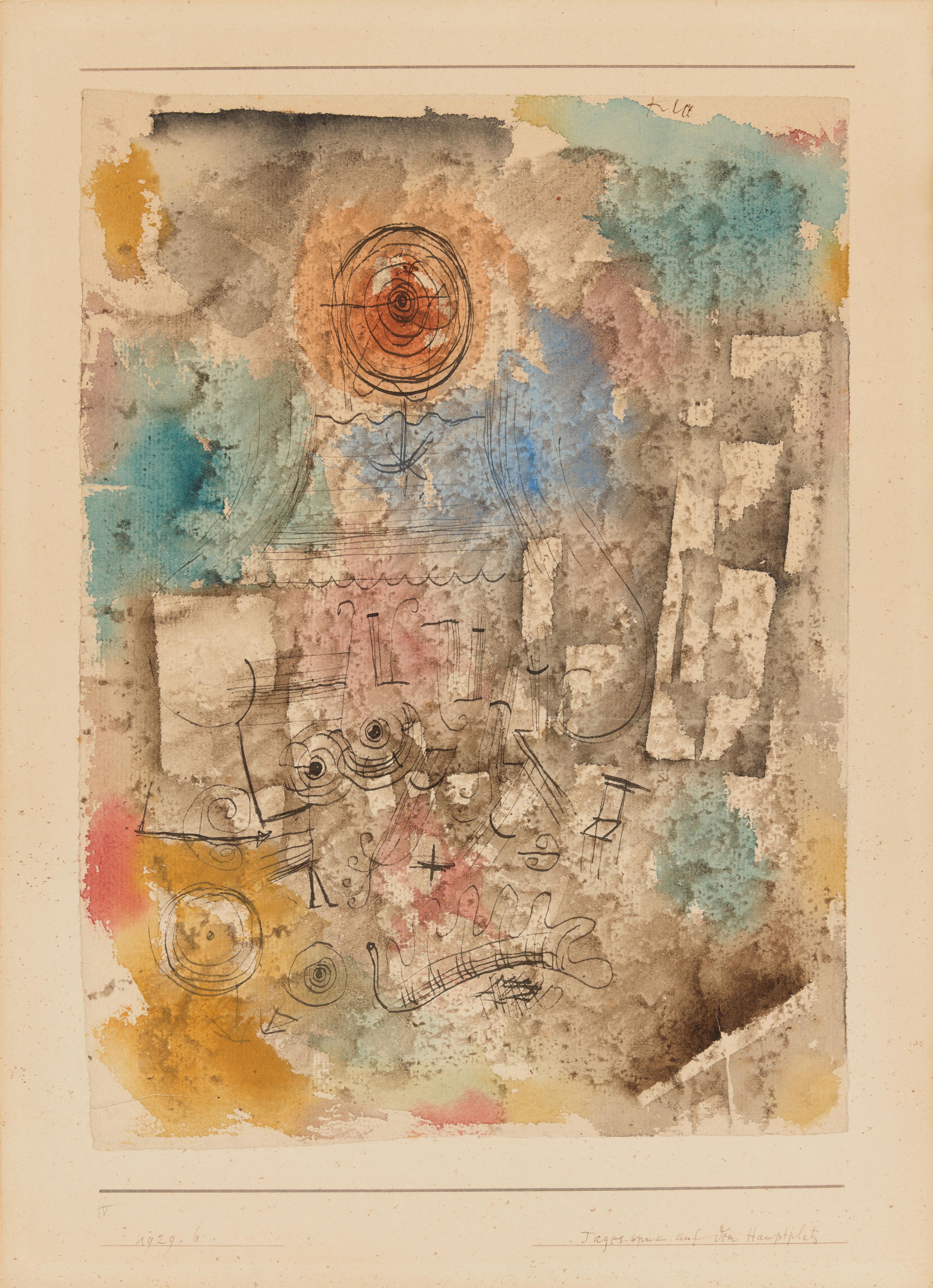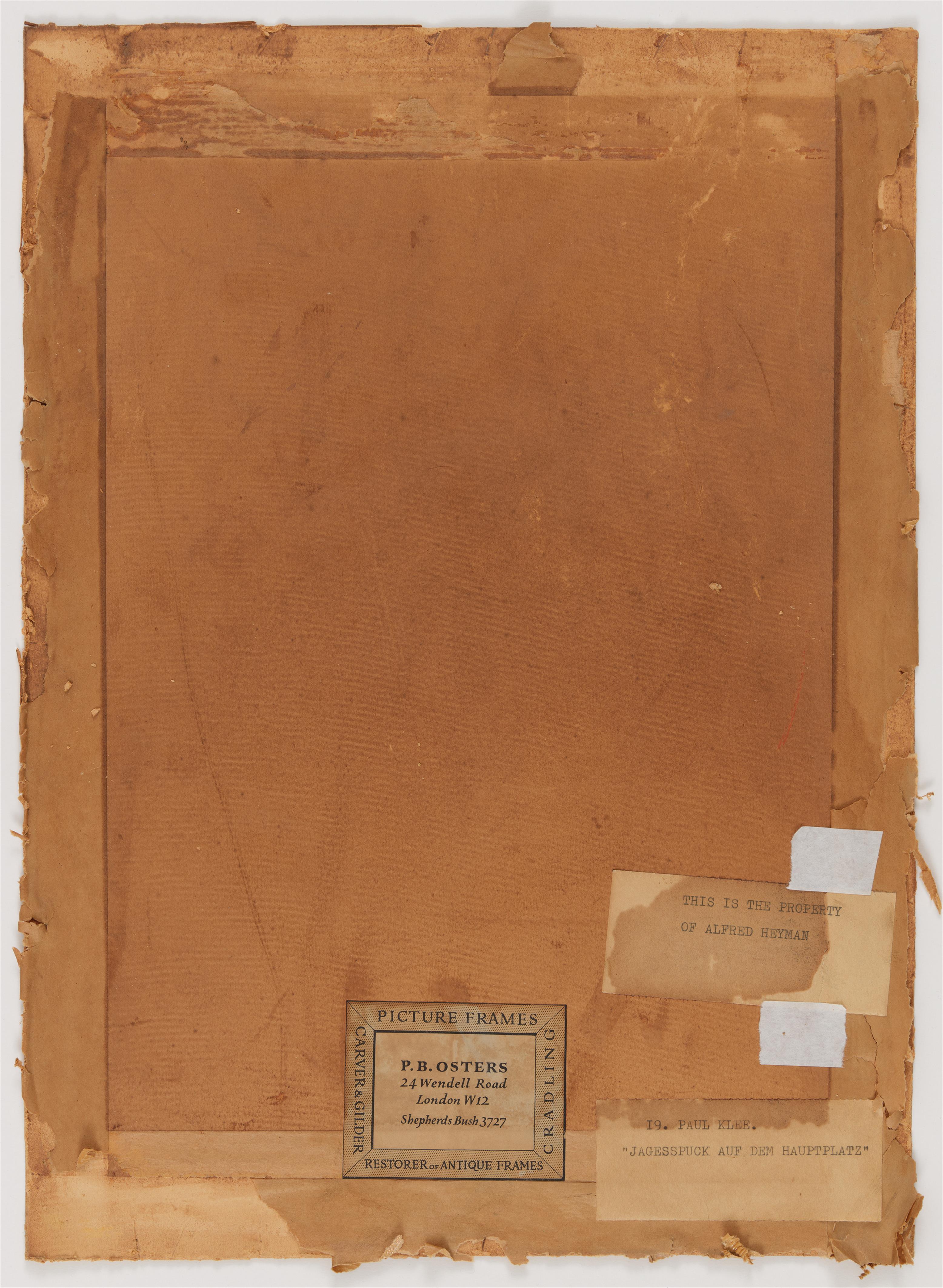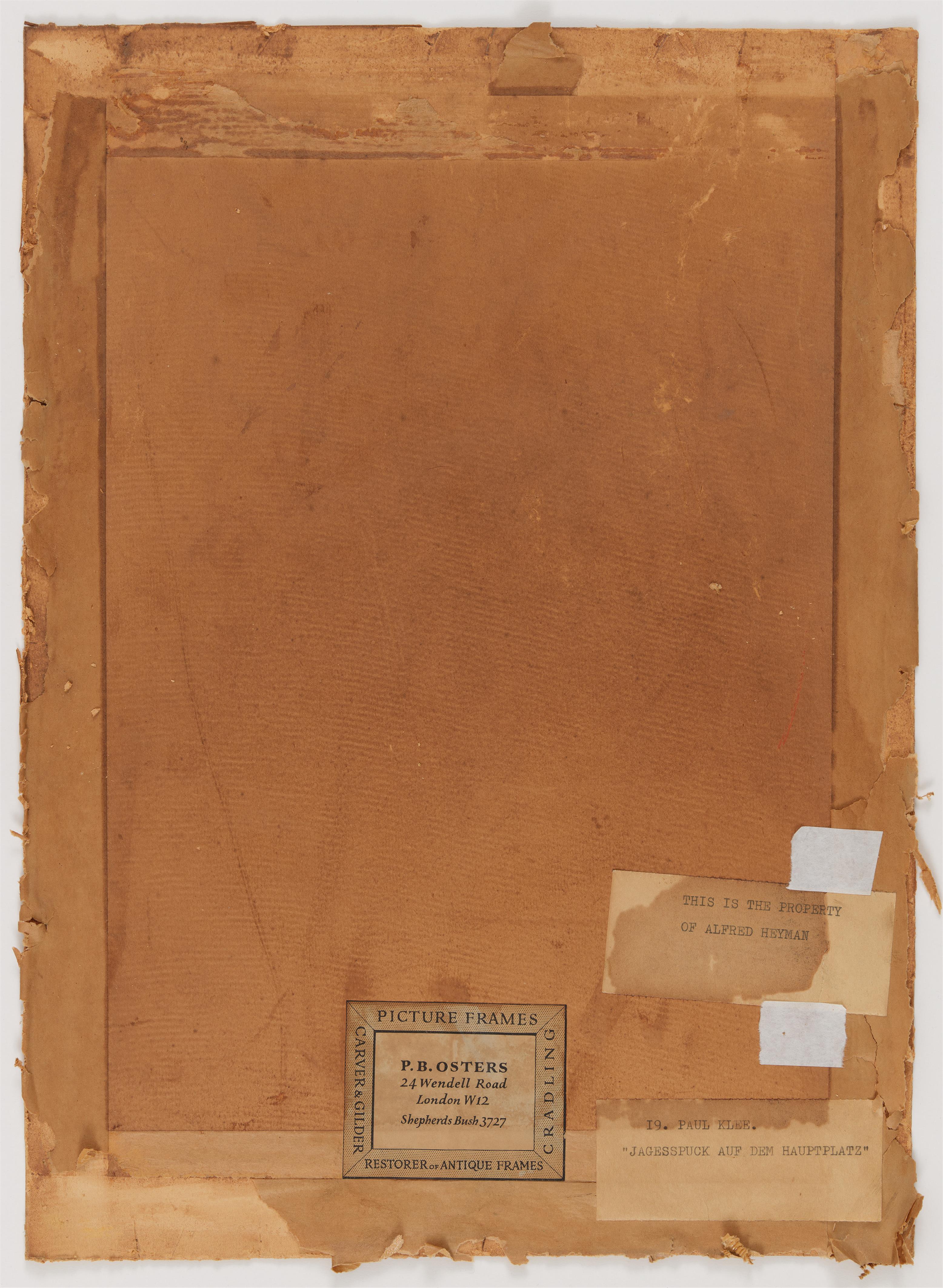Paul Klee
Tagesspuk auf dem Hauptplatz
1929
Watercolour and pen and India ink on laid paper, laid down on card. Watercolour 30.7/31.5 x 22.2/22.8 cm, card 38.2 x 27.6 cm. Framed under glass. Signed 'Klee' in the upper right in the depiction, dated 'IV 1929.6' lower left on the card and titled 'Tagesspuk auf dem Hauptplatz' right. - In very good condition. Slightly browned.
“Tagesspuk auf dem Hauptplatz” presents itself with an anecdotal cheerfulness – proof of the lightness and sure hand with which Paul Klee was able to compose his fantastic and poetic scenes.
As a place between reality and fantasy, the “intermediate world” was of decisive significance for the artist. “The artistic scenery, formal direction, irony and wit are means to reveal and simultaneously conceal, to transform things into riddles that have to be solved. Setting out from his own human observations, Klee discovered psychologically founded intermediate worlds: those realms of experience which – like childhood or dreams, memories or hopes – mediate between a belief in a unified substance of creation and vivid, ordinary human relationships and uncertainties” (Tilman Osterwold, Paul Klee. Die Ordnung der Dinge, Stuttgart 1975, pp. 14f.).
Like in a little stage set, a scene is suggested: a chair and the curved lines of an awning place it in front of a cafe. The friendly apparition haunting this place manifests itself in the forms made up of concentric circles, the largest of which seems to hover above the scene. The details are sketched with delicate strokes of the pen, but the leading role is played by the subtle colour scheme. A light grey dominates, accompanied by washes in shades of blue as well as ochre and red. This results in the illusion of a passing summer rain, after which the local colours appear all the fresher and begin to shine.
This enchanting sheet is from Heinrich Stinnes’s (1867 - 1932) important collection of prints and drawings. The brother of the major industrialist Hugo Stinnes, he built up one of the most extensive and highest-quality collections of contemporary works on paper at the beginning of the 20th century. After Stinnes’s collection was dispersed at various auctions, this work entered the possession of Cologne businessman Joseph Heymann (1887 - 1954), who was an important patron and collector of modern art in the 1920s and 1930s. He succeeded in taking his art collection with him when he emigrated to London in 1937 due to persecution. The history of Joseph (Joe) Heymann's collection is currently being researched.
Catalogue Raisonné
Cat. Rais. Paul Klee 4762
Provenance
Heinrich Stinnes, Cologne, until 1932; Heinrich Stinnes estate, Cologne, 1932-1938; Gutekunst and Klipstein, Bern, Auktion 20-22 June 1938, Lot 537; Daniel-Henry Kahnweiler, Paris, from 1938; Collection Joseph Heymann, London; since then in family ownership
Literature
Christina Kröll, Die Bildtitel Paul Klees. Eine Studie zur Beziehung von Bild und Sprache in der Kunst des zwanzigsten Jahrhunderts, dissertation, Bonn 1968, p. 76; Christian Rümelin, Paul Klee und August Macke im Spiegel zeitgenössischer Sammlungen, in: Die Ordnung der Farbe. Paul Klee, August Macke und ihre Malerfreunde, exhib. cat. Kunstmuseum Bonn/Kunstmuseum Bern 2000/2001, p. 56, note 29.






